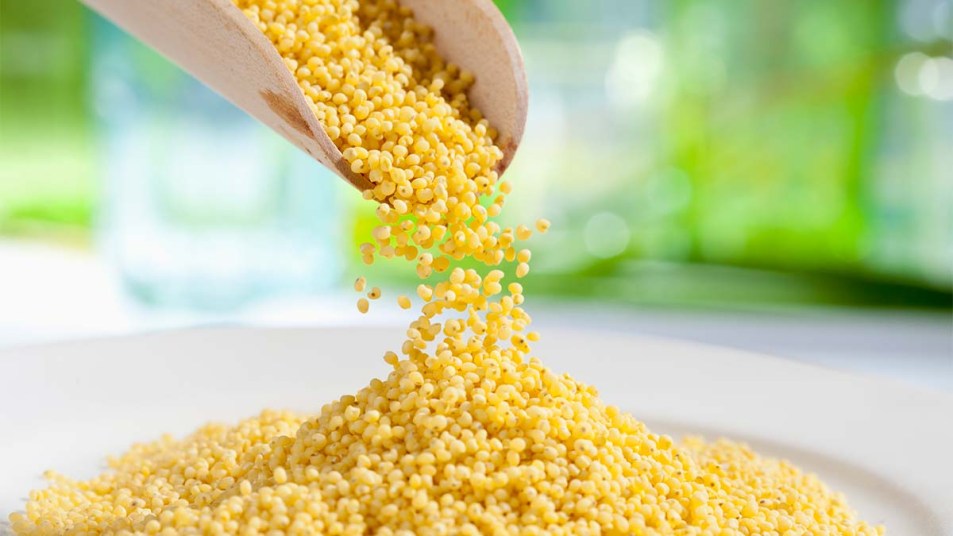Adding This Delicious Grain to Your Diet Can Help Ward Off a Fatigue-Causing Iron Deficiency

Dizziness, shortness of breath, and fatigue are some of the ways our body lets us know that we need more iron in our diet. Another key sign of low iron levels is a condition called iron deficiency anemia, which involves a lack of healthy red blood cells causing symptoms like headaches and chest pain. Luckily, new research has revealed a simple way to steer clear of that by eating more of an ancient grain that’s delicious and a great source of iron: millet!
If you’re new to millet, it’s a small and round grain that’s grown in countries such as India and Nigeria. It’s known for having a nutty, corn-like taste, which makes it perfect to enjoy on its own as a starchy side or to make a variety of dishes such as homemade pancakes and bread.
A recent study published in Frontiers in Nutrition looked at the benefits of daily millet consumption. Study co-author Joanna Kane-Potaka tells Woman’s World that cereal grains like rice, wheat, and corn make up about 70 percent of the plate for the average everyday diet across South Asia and sub-Saharan Africa. She highlights how previous research has shown that millet (also a cereal grain) can help with blood sugar management and lowering heart disease risk. However, she along with the other researchers wanted to see how eating millet through a common food like cereal could stabilize iron levels to ward off this deficiency-related anemia. It’s estimated that 30 percent of people have this type of anemia due to not getting enough iron each day.
The study involved nearly 1,000 participants (adults, children, and adolescents) and six different types of millet in cereal including pearl, finger, foxtail, sorghum mixed with kodo, and little millets. Participants ate the various types of millet for anywhere between 21 days and 4 1/2 years with researchers tracking progress along the way.
The study’s authors found consuming millet was linked to a 13.2 percent increase in hemoglobin levels by the end of the research period. Hemoglobin is a protein in red blood cells that’s responsible for carrying oxygen to organs and tissues along with transferring carbon dioxide from those areas of the body to the lungs. There was also an average uptick in serum ferritin by 54.7 percent. Ferritin is another protein in blood that contains iron and is considered a key marker for this specific deficiency.
Overall, they were confident that millet is an excellent source of iron by the end of the study. “Consuming 84 to 300 grams [one cup cooked equals about 174 grams] to high iron millet is shown to help meet more than 70 percent of the actual requirement of iron for women and children of various age groups,” lead study author, Seetha Anitha, PhD, shares with us.
Dr. Anitha adds that it’s good to eat different kinds of millet as part of a balanced diet. Millet is available to buy in stores and online. Although it’s common to see it in cereal form like Arrowhead Mills Puffed Millet Cereal (Buy at Walmart, $10.97), there are plenty of other mouthwatering ways to eat and cook with it at home.
You can boil a variety like Bob’s Red Mill Whole Grain Millet (Buy at Walmart, $6.76) and eat it like rice as a side dish. Millet flour (Buy at Walmart, $5.49) is a gluten-free substitute that can be used in pancake batter and baked goods. Dr. Anitha also notes that millet pasta and noodles (Buy on Amazon, $3.99) are a tasty swap for regular pasta when those carb cravings strike.
Looks like it’s time we all hop aboard the millet grain train for healthy iron levels!












